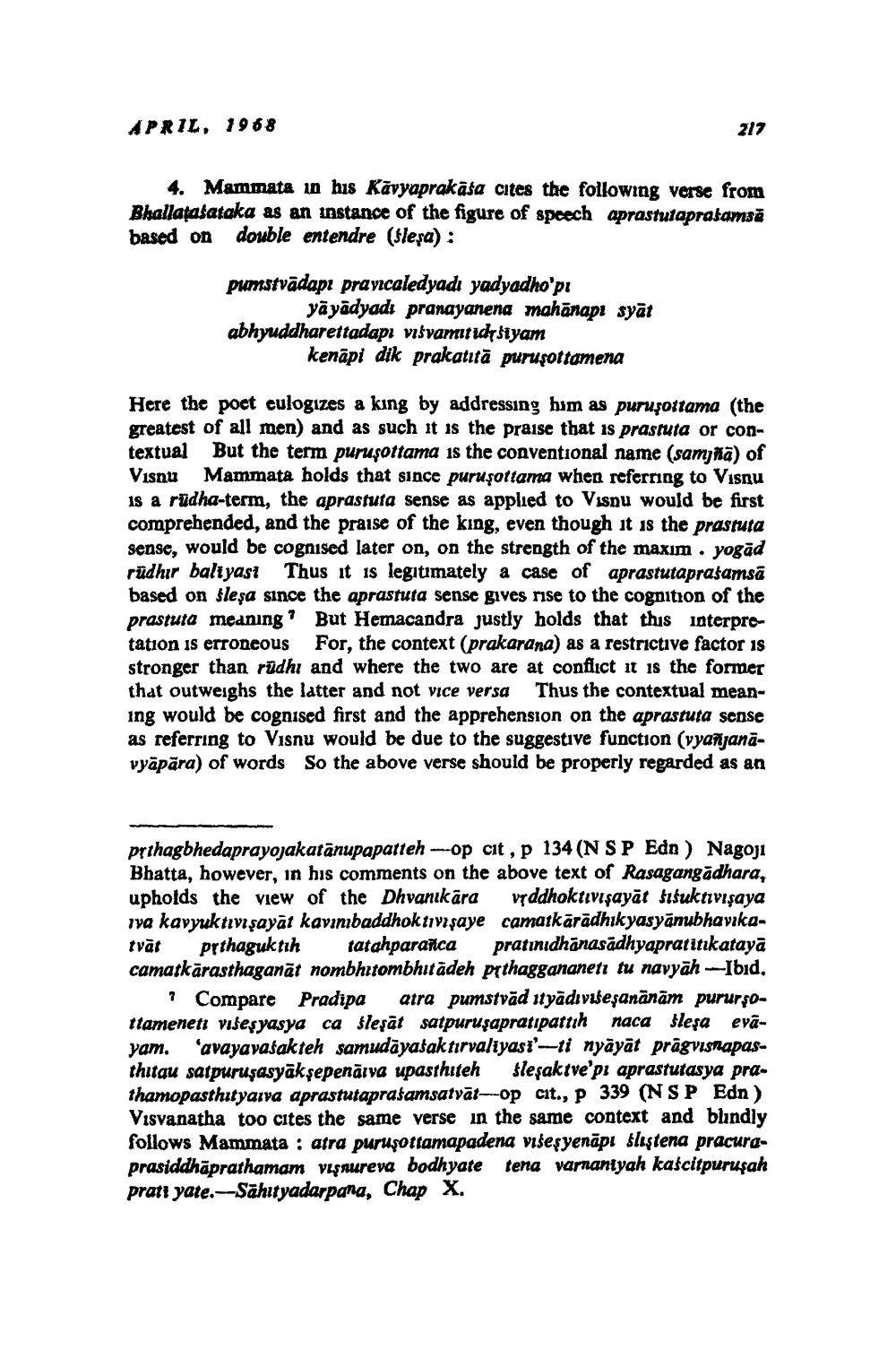________________
APRIL, 1968
217
4. Mammata in his Kavyaprakāsa cites the following verse from Bhallatasataka as an instance of the figure of speech aprastutaprasamsă based on double entendre (fleşa) :
pumnstvādapı pravicaledyadı yadyadho'pı
yayadyadı pranayanena mahānapi syāt abhyuddharettadapi visvamtidrsiyam
kenäpi dik prakaitā puruşottamena
Here the poet eulogizes a king by addressing him as purupottama (the greatest of all men) and as such it is the praise that is prastuta or contextual But the term puruşottama is the conventional name (samjha) of Visnu Mammata holds that since puruşottama when referring to Visnu is a rüdha-term, the aprastura sense as applied to Visnu would be first comprehended, and the praise of the king, even though it is the prastuta sense, would be cognised later on, on the strength of the maxim . yogad rüdhir baltyastThus it is legitimately a case of aprastutaprasamsa based on sleşa since the aprastuta sense gives rise to the cognition of the prastuta meaning? But Hemacandra justly holds that this interpretation is erroneous For, the context (prakarana) as a restrictive factor is stronger than rüdhi and where the two are at conflict it is the former that outweighs the latter and not vice versa Thus the contextual meaning would be cognised first and the apprehension on the aprastuta sense as referring to Visnu would be due to the suggestive function (vyanjanavyāpāra) of words So the above verse should be properly regarded as an
pythagbhedaprayojakatānupapatteh-op cit, p 134 (NSP Edn ) Nagoji Bhatta, however, in his comments on the above text of Rasagangadhara, upholds the view of the Dhvanıkāra vyddhoktivişayāt fršuktivişaya rva kavyuktıvı şayāt kavınıbaddhok tivaşaye camatkārādhikyasyānubhavikatvāt prthagukth tatahparanca pratınıdhānasädhyapratitikataya camatkārasthaganāt nombhitombhitādeh pythaggananeti tu navyäh-Ibid.
7 Compare Pradipa atra pumstvād ityādıvıeşanānām purur şottameneti višeşyasya ca sleşāt satpuruşapratipattıh naca śleşa evayam. 'avayava akteh samudāyasaktırvaliyasi'--ti nyāyāt prāgvisnapasthitau satpuruşasyāk sepenārva upasthiteh slesaktve'pi aprastutasya prathamopasthityaiva aprastutaprasamsatvāt--op cit., P 339 (NSP Edn) Visvanatha too cites the same verse in the same context and blindly follows Mammata : atra puruşottamapadena višeşyenāpi slıştena pracuraprasiddhāprathamam vissureva bodhyate tena varnantyah kascitpurusah pratı yate.--Sahityadarpana, Chap X.




